- Home
- James A. Michener
Texas Page 2
Texas Read online
Page 2
Texas Handbook: Any writer on Texas finds himself indebted to the Texas Handbook, a unique three-volume encyclopedia. A treasure trove of historical research, it is now undergoing a monumental expansion to six large volumes that will require ten years of work. It will then be indispensable to any serious student of Texas and will have no equal in any other state.
Assistants: John Kings, who had organized my office and helped on research for Centennial, proved once more that he is both an editor and an understanding colleague; Robert Wooster and Frank de la Teja, who are studying for their Ph.D.s in Western history and Latin American Studies, respectively, were delightful to work with; Lisa Kaufman was most skillful in word processing and offered cogent comment; her processor was a valued loan from Kenneth Olson, president of Digital Corporation. Debbie Brothers was most adept in coordinating the final revisions. Anders Saustrup, most knowledgeable in the minutiae of Texas history, carefully vetted the manuscript. In a most generous way, although he lived in San Antonio, T. R. Fehrenbach, author of Lone Star: A History of Texas and the Texans, provided special help and original insights when requested.
• • •
I would like also to acknowledge those scores of loyal and enthusiastic Texans who sent me letters, diaries, manuscripts, books and documents telling the stories of their ancestors, whose fortitude and resourcefulness contributed to the unique characteristics of this state. Their interest was remarkable, generous, unprecedented in my experience, and most encouraging to a Northerner like me. Thank you all.
This novel is dedicated to three distinguished literary critics
I have been informed that many books of fiction … which are unrelated to religion … go to the Indies [which would include what later became Texas]; since this is bad practice … I commend you, therefore, from this time henceforth neither to permit nor allow any person at all to take any books of fiction there, but only those relating to the Christian religion and morality … No other kind is to be allowed.
I, the Queen1 [of Spain]
4 APRIL 1531
Another damned, thick, square book! Always scribble, scribble,
scribble! Eh! Mr. Gibbon?
William Henry, Duke of Gloucester,2
to the author of
The Decline and Fall of the Roman Empire.
1781
Third. My will is that my sons receive solid and useful education … I wish [them] to be early taught an utter contempt for novels …
Sam Houston,3
His Last Will and Testament,
2 APRIL 1863
1 She issued this order while the King was busy in another country.
2 He never amounted to much.
3 He was forced to surrender almost every good job he ever had.
FACT AND FICTION
This novel strives for an honest blend of fiction and historical fact, and the reader is entitled to know which is which.
The Governor’s Task Force: The Task Force is wholly fictional, as are all the participants, including the governor. At the end of each chapter the Task Force sessions are imaginary, as are the invited speakers.
I. Land of Many Lands: The three great explorations, and all their incidents, were historical. Only the boy Garcilaço de Garza is fictional. For example, Cárdenas and El Turco were real people.
II. The Mission: Santa Teresa is fictional, but the other five San Antonio missions, which can be visited today, were historical. Of the principal characters, only Juan Leal Goras was real.
III. El Camino Real: Béjar and Saltillo are historical and are accurately reported. All characters are fictional. The Veramendi family of Saltillo and Béjar was real, and very important, but the specific members shown here are fictional.
IV. The Settlers: Only Stephen F. Austin and Sam Houston were historical. Victor Ripperdá is fictional, but his famous uncle was real. The Quimper family is fictional, as is their ferry. Father Clooney and Reverend Harrison are fictional.
V. The Trace: The Macnabs and all other characters are fictional, but the Glencoe Massacre was historical. The De Leóns of Victoria had a real empresario grant.
VI. Three Men, Three Battles: Jim Bowie, Davy Crockett, William Travis, James Fannin, James Bonham, Galba Fuqua, Mirabeau Lamar and Sam Houston on the Texas side were historical, as were Santa Anna, Cós, Urrea and Filisola on the Mexican. Garza, Ripperdá, Campbell, Marr, Quimper, Harrison and the Macnabs are fictional. Descriptions of the three battles, including the blizzard north of Monclova, strive to depict historical fact. Goliad especially, one of the focal events of Texas history, is accurately portrayed.
VII. The Texians: The Allerkamps are fictional, as is their homeland Grenzler and their ship Sea Nymph. The founding of the Texas Rangers was historical, as were their major exploits in this chapter, specifically the expulsion of the Cherokee. Captain Sam Garner is fictional.
VIII. The Ranger: Rangers Macnab, Komax and Garner are fictional. Harry Saxon and Colonel Cobb are fictional. Generals Taylor and Scott were real. Each of the significant actions of the Rangers was historical, but specific sites have sometimes been shifted. The murder of Ranger Allsens was real, as was the retaliation.
IX. Loyalties: Edisto Island, Social Circle and Jefferson are real; the families occupying them are fictional. Events at the siege of Vicksburg are historical, as are the various behaviors of Sam Houston. The cotton trade to Bagdad was historical, as was the now-vanished Bagdad. The massacre of the Germans and the hangings along the Red River were historical.
X. The Fort: Fort Sam Garner and its military occupants are fictional. Visiting officers Sherman, Grierson, Miles, Mackenzie and Custer were historical. Chief Matark, Earnshaw Rusk and Emma Larkin are fictional, but each is based upon real prototypes. Quakers did administer the Comanche camps, but Camp Hope is fictional, as is Three Cairns. Rattlesnake Peavine is fictional.
XI. The Frontier: All citizens in Fort Garner are fictional. The architect James Riely Gordon was real, and the famous carvings on his fictional Larkin County Courthouse can be found today on his real courthouse in Waxahachie. The Parmenteer-Bates feud was fictional but it could have been modeled after any of a dozen such protracted affairs. The trail to Dodge City was historical, but R. J. Poteet is fictional. So is Alonzo Betz, but the impact of his barbed wire was historical. The destruction of Indianola happened as described.
XII. The Town: All characters are fictional, including the revivalist Elder Fry, but the church trial of Laurel Cobb is based upon a real incident whose details were provided by a son of the accused. The Larkin oil field is fictional, but its characteristics are accurate for that part of Texas. Ranger Lone Wolf Gonzaullas was real. Details regarding the Fighting Antelopes are fictional but are based upon numerous real teams of that period. Politics as practiced in Bravo and Saldana County are fictional, but prototypes abound and some still function.
XIII. The Invaders: All characters and incidents are fictional, but the Larkin tornado is based on real and terrifying prototypes.
XIV. Power and Change: All characters and incidents are fictional, except that the summer storm of 1983 was real.
CONTENTS
Cover
Title Page
Copyright
Acknowledgments
Dedication
Fact and Fiction
THE GOVERNOR’S TASK FORCE
I. LAND OF MANY LANDS
II. THE MISSION
III. EL CAMINO REAL
IV. THE SETTLERS
V. THE TRACE
VI. THREE MEN, THREE BATTLES
VII. THE TEXIANS
VIII. THE RANGER
IX. LOYALTIES
X. THE FORT
XI. THE FRONTIER
XII. THE TOWN
XIII. THE INVADERS
XIV. POWER AND CHANGE
Other Books by This Author
About the Author
I WAS SURPRISED WHEN SHORTLY AFTER NEW YEAR’S DAY OF 1983, the Governor of Texas summoned me to his office, because I hadn�
��t been aware that he knew I was in town. I’d been in Austin for some weeks, preparing a series of five lectures I was to deliver at the Lyndon B. Johnson School of Public Affairs at the University of Texas. The rather grandiloquent title, ‘Southwest America in the World Society,’ had been chosen by local scholars in a desire to broaden student horizons. The university authorities had left me pretty much to myself; I had paid a courtesy call on the president and had consulted two or three times with the dean of graduate studies, but to hear from the governor himself was something quite unexpected.
I was a native son and legal resident of Texas; however, for the past year I’d been working in Geneva on leave from my job at Boulder’s well-regarded think tank, The Institute for Cultural Studies, which I headed. While serving in Boulder, I’d learned the truth of the old statement: ‘When good Texans die they go to Colorado.’
I was gratified by my return to the university, for I found its students refreshing, even though some of the brightest seemed to come from up north. The best football players, however, enrolled at Texas, and that’s what mattered.
I started in a low key with my students, but won their acceptance by stating in a newspaper interview: ‘The students at the University of Texas may not be the best scholars in the world, but they’re among the bravest. Anyone who crosses Guadalupe, the main drag by the campus, six times a day without police escort, has to be heroic’ I thought people drove crazy when I lectured at Coimbra University in Portugal, but Portuguese drivers are merely in training for the big time in Texas.
Confused as to why the governor might want to meet me, I left my guest office in the shadow of the main building. When I got outside I glanced up at its tower; the sight of it always set me thinking about the conflicting messages that it sent. After any football university major sports victory, and they came frequently at Texas, it was illuminated gaudily in the school color, burnt orange, but on gray and misty mornings, which came less frequently, I knew that people recalled that horrible August day in 1966 when Charles Whitman, an Eagle Scout, gained a gruesome immortality. After murdering his wife and mother, he filled a footlocker with guns, ammunition and knives and drove to the university. Slaying the receptionist, he took the elevator to the top of the tower, where he unlimbered his arsenal and began shooting at random any students or casual passers-by. In all, he killed sixteen persons before sharpshooters gunned him down. Saluting the handsome tower, I crossed the bustling campus which had so excited me when I first reported there in 1959. The university now had forty-eight thousand students, with some of the most attractive female students in America, a fact which was confirmed every time I stepped outside my office.
I walked south to Martin Luther King Boulevard and saw before me, six blocks down Congress Avenue, that majestic state capitol which had come into being in so strange a manner and with such curious results. In 1882 the state had been broke, but it lusted for the biggest possible capitol building to adorn the biggest state, so it offered three million acres of seemingly worthless western plains to anyone who would finance the project, and some Illinois investors took the bait. Behaving as if they were honorary Texans, they euchered the government out of an extra fifty thousand acres—and everybody was happy.
How wild the turns of history! The land which the legislature gave the Illinois syndicate did seem worthless, but some comparable West Texas land they gave the university—at about the same time—turned out to be dripping with oil, which made it potentially the richest university in the world.
As soon as I entered the familiar old capitol building with its high dome and nineteenth-century dignity, I was as captivated as I had been on that day long ago when I stood in the rotunda with the other children of my grade-school class to honor Sam Houston and the heroes of the Alamo. Today as I passed on my way to the governor’s office, a new crop of children listened, eyes aglow.
When I reached the office his secretary, beautiful and leggy, like many Texas women holding such positions of importance, said cheerily: ‘So glad to have you with us, Professor. The others are waiting inside.’ And with that, she pinned on my left lapel a badge which said ‘Dr. Travis Barlow, Institute for Cultural Studies.’
‘Who are the others?’ I asked, and she said: ‘The governor will explain.’
She led me to an anteroom decorated with a buffalo head on the wall and two fine Longhorn hides on the floor, but the real attraction was a group of four citizens, chosen with care, apparently, as if to represent the strength and diversity of Texas. Since we were obviously to form a unit of some kind, I tried to fix in memory each face and its accompanying tag.
The first such pair belonged to a tall, thin, droop-shouldered, scowling man whose appearance alone would attract attention regardless of where he sat, but when I saw his tag I understood his real notoriety. He was Ransom Rusk, designated by both Fortune and Forbes as one of the richest men in Texas, ‘net worth probably exceeding one billion.’ He was in his late fifties, and from the way in which he withdrew from others, I judged that he was determined to protect both his wealth and his person from would-be intruders. Although he was dressed expensively he was not neat, and this and his permanent frown indicated that he didn’t care what others thought of him.
He was talking with a man of completely different cast, a big, easy, florid fellow, also in his fifties, wearing an expensive whipcord suit of the kind favored by ranchers, high-heeled boots, and about his neck a western bolo string tie fastened with a large turquoise gemstone. When I read his tag, Lorenzo Quimper, I had to smile, for he was a legend, the prototypical Texas wheeler-dealer, owner of nine ranches, friend of presidents, dabbler in oil and everything else, and a rabid supporter of his university athletic teams. He was a handsome man, but there was something too expansive about him; if he were your small-town banker, you would not trust him with your money. Seeing me enter, he turned momentarily in my direction, smiling broadly. ‘Hiya, good buddy,’ he said, offering his hand. ‘My name’s Quimper. Welcome to the big time.’ He returned instantly to his conversation with Rusk, for in his book I was worth three seconds.
The third person I turned to was a tall patrician woman in her late sixties, beautifully dressed, beautifully groomed. She had a no-nonsense mien and looked as if she was accustomed to serving on boards and making important decisions. Her tag said that she was Miss Lorena Cobb, and I recognized her as the daughter and granddaughter of two remarkable United States senators who in the years following the Civil War had made commendable contributions to Texas and to the nation. She was one of those standard Texas women, overawed in their twenties by the excessive machismo of their men, but emergent in their fifties as some of the most elegant and powerful females on earth. They formed the backbone of Texas cities, persuading their wealthy husbands and friends to build hospitals and museums, then dominating the society which resulted. Women like her made those of Massachusetts and New York seem downright anemic. But the immediate impression she created was one of agreeableness. I admired her manner, even as she sat there with her hands clasped primly in her lap, for she seemed to be saying ‘Let’s get on with it.’
The most interesting of the four was a small-boned man in his late thirties, about five feet five, weighing not over a hundred and fifty, with a smooth olive skin, black hair and a small, neatly trimmed mustache. His tag said ‘Professor Efraín Garza, Texas A&M,’ and I concluded from the accent mark in his first name that he might be a visiting scholar from Mexico. But if that was true, what was he doing here? I was about to ask questions when the door to the inner office opened and the governor himself came in to greet us. Red-headed, burly, in his middle fifties, he moved with a restrained energy that seemed to warn: ‘Let’s go. We haven’t much time.’
‘Hello! Hello! I hope you’ve all met.’ When we indicated that we had not, he stopped and grabbed Rusk by the arm as if the billionaire was, because of his power, entitled to be introduced first: ‘You’ve surely seen this man in the papers. Well, here he is, Ransom Rusk.’
The tall man smiled bleakly, and the governor moved on.
‘This rascal is the state’s unofficial ambassador of good will, Lorenzo Quimper.’ Newspapers had dubbed him Lorenzo il Magnifico in recollection of the flamboyant Medici prince, and there was a good deal of the Renaissance condottiere about him: lobbyist, oilman, real estate developer, wrecker of the university, builder of the university, principal cheerleader at any university athletic contest, scourge of liberal Jewish professors from the North, he had been a stormy petrel of Texas life for a generation. Hated by many, loved by others with equal intensity, he was the darling of the rough-diamond element in Texas life, their spokesman and defender. At the university baseball games, which he rarely missed, the irreverent bleachers would rise after the visiting team had batted in the fifth inning, and a tuba, a trombone and a trumpet would play a sustained flourish as a huge sign was draped across the railing: ‘All Hail, Lorenzo il Magnifico! The Bottom of the Fifth.’ And the leader of the undergraduate gang would hoist an immense whiskey bottle filled with some amber liquid and drain it—to the wild applause of an audience who thus toasted Quimper’s remarkable capacity for booze. Now when he smiled at me radiantly, in the way a little boy would, I knew I was going to like him. Curse and even despise him at times, yes, but enjoy him.

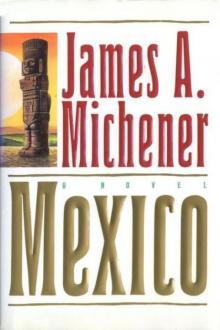 Mexico
Mexico The World Is My Home: A Memoir
The World Is My Home: A Memoir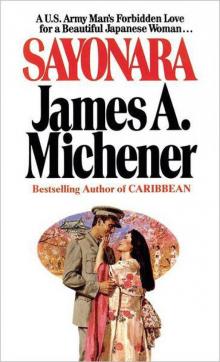 Sayonara
Sayonara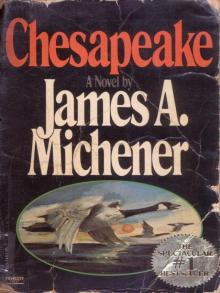 Chesapeake
Chesapeake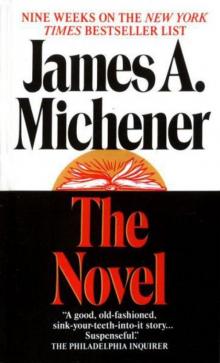 The Novel
The Novel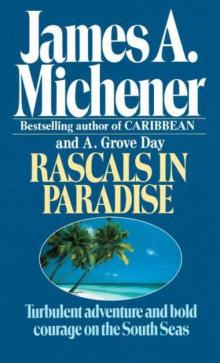 Rascals in Paradise
Rascals in Paradise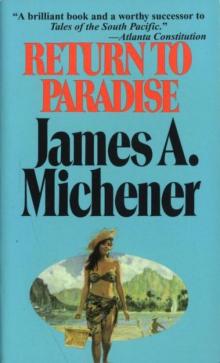 Return to Paradise
Return to Paradise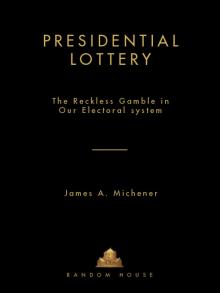 Presidential Lottery: The Reckless Gamble in Our Electoral System
Presidential Lottery: The Reckless Gamble in Our Electoral System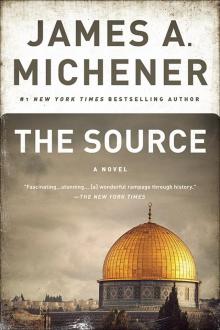 The Source
The Source Poland
Poland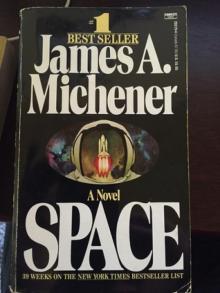 Space
Space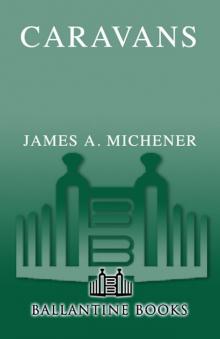 Caravans
Caravans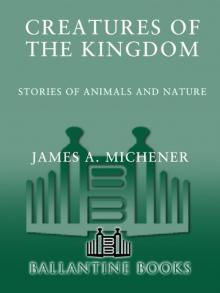 Creatures of the Kingdom: Stories of Animals and Nature
Creatures of the Kingdom: Stories of Animals and Nature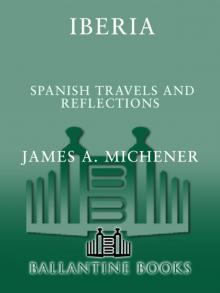 Iberia
Iberia Hawaii
Hawaii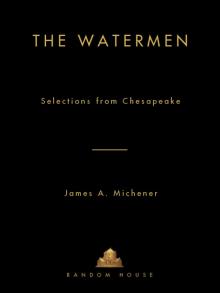 The Watermen: Selections From Chesapeake
The Watermen: Selections From Chesapeake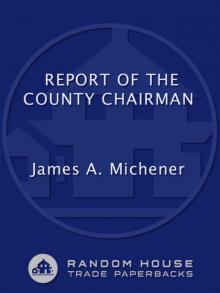 Report of the County Chairman
Report of the County Chairman The Covenant
The Covenant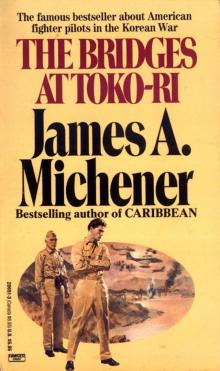 The Bridges at Toko-ri
The Bridges at Toko-ri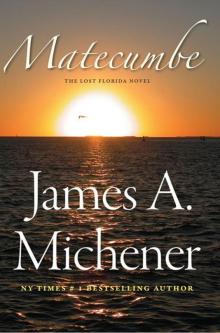 Matecumbe
Matecumbe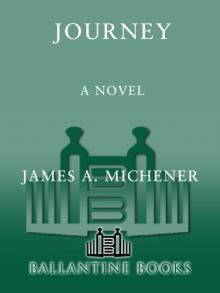 Journey: A Novel
Journey: A Novel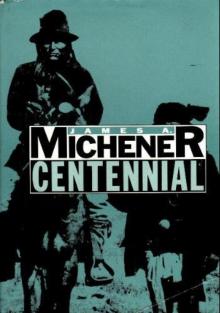 Centennial
Centennial Sports in America
Sports in America Texas
Texas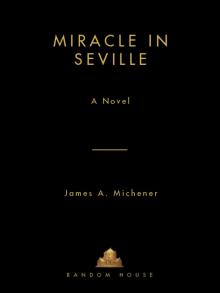 Miracle in Seville
Miracle in Seville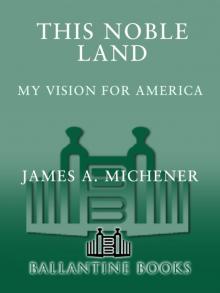 This Noble Land: My Vision for America
This Noble Land: My Vision for America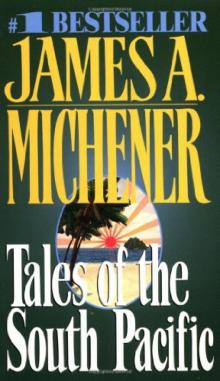 Tales of the South Pacific
Tales of the South Pacific Bridges at Toko-Ri
Bridges at Toko-Ri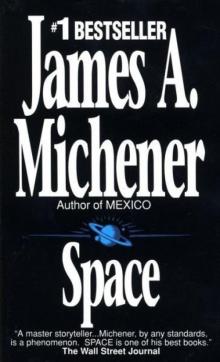 Space: A Novel
Space: A Novel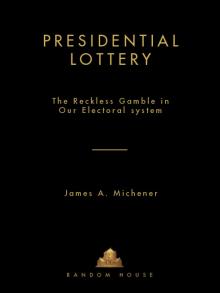 Presidential Lottery
Presidential Lottery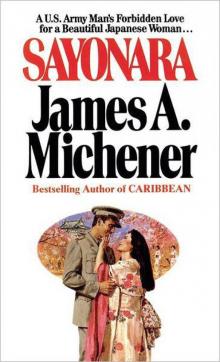 Sayonara: A Novel
Sayonara: A Novel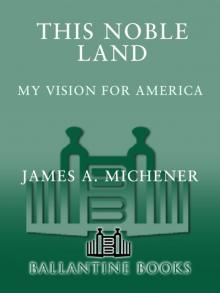 This Noble Land
This Noble Land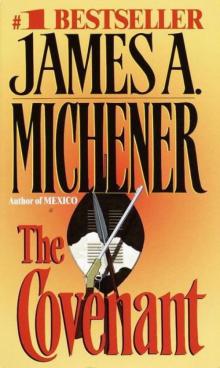 The Covenant: A Novel
The Covenant: A Novel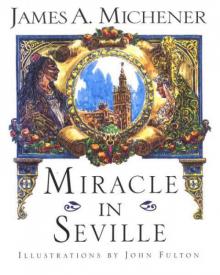 Miracle in Seville: A Novel
Miracle in Seville: A Novel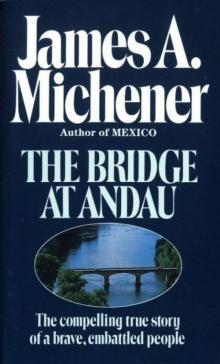 The Bridge at Andau
The Bridge at Andau Source
Source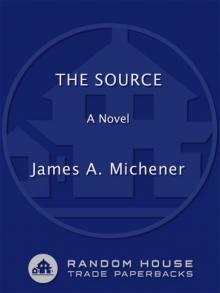 The Source: A Novel
The Source: A Novel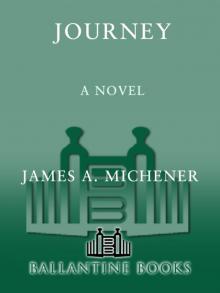 Journey
Journey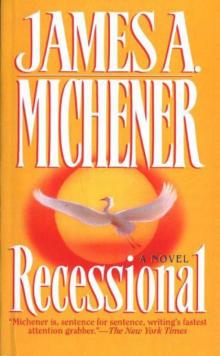 Recessional: A Novel
Recessional: A Novel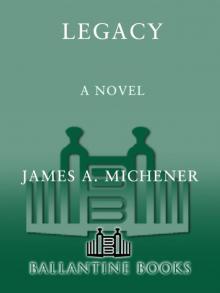 Legacy: A Novel
Legacy: A Novel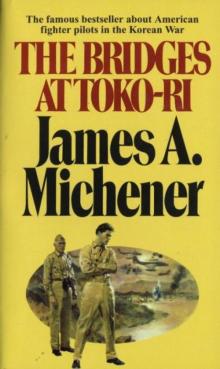 The Bridges at Toko-Ri: A Novel
The Bridges at Toko-Ri: A Novel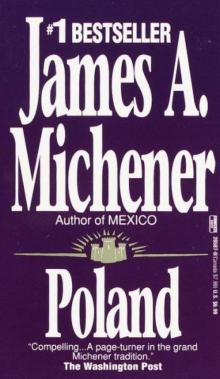 Poland: A Novel
Poland: A Novel